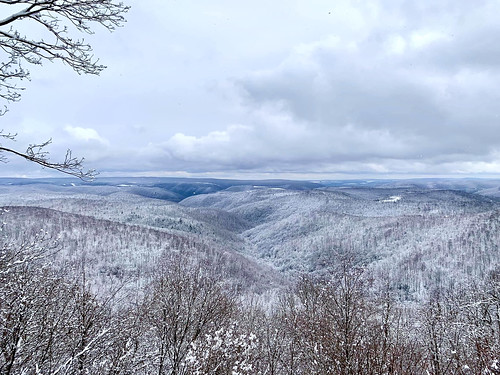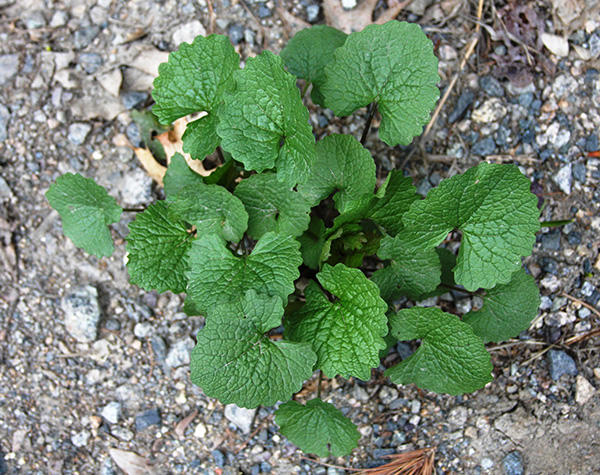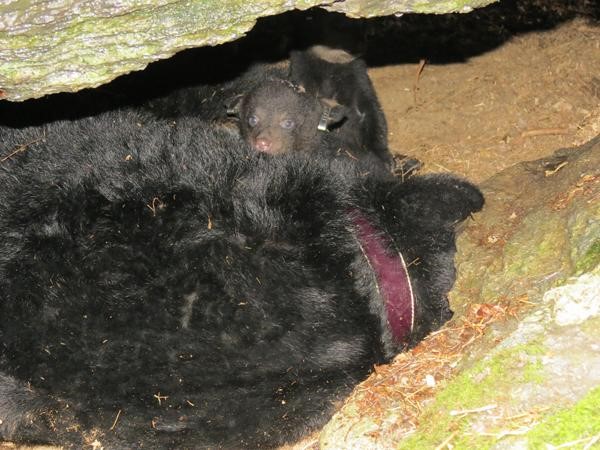In Praise of Dormancy
It is winter in Maryland. The days are short. The weather is wacky; it could be snow, rain, wintry mix, 60 degrees and sunny. Just spin the wheel! In our former agrarian days, winter was a time to pause and take stock, to prepare for the coming spring. For Mother Nature and her wildlife, it’s time to slow down. Or is it? Winter and cold weather are vital to the life cycles of plants and animals. We could learn a thing or two about coping with stress from our friends in natural areas.
A Northern Hemisphere winter, the coldest time of year, presents a different set of challenges for living organisms. Reduced photoperiod, those shortened hours of sunlight, is a stressor for plants and animals alike. However, the greatest stresses of winter include lower temperatures and reduced access to available water. All other problems of winter stem from these basic challenges: lack of food, need for shelter, and increased predation threats. Of course, any creature that can’t maintain its own body temperature at safe levels is going to face a challenge in winter. These animals must find a way to survive when the mercury plunges.
The easiest way to deal with winter is NOT to deal with winter. Some birds leave and fly south on a warm air current to Central or South America or the Caribbean to wait out the cold. For some species, Maryland is south (see this edition’s owls article). This is easy enough for some birds but what about the species that can’t move that far, or in terms of plants, what happens if you can’t move at all? Dormancy is one option.
Dormancy is defined as a period of inactivity when growth and development temporarily stop. There are as many different ways to be dormant, each with its own term, as there are groups of animals and plants.
Plants
Plants are the anchor of most food chains; anything that affects plants will impact every other organism in that food chain. Plants are essentially a collection of boxes of water. When water freezes and expands, inflexible plant cell walls rupture, killing the plant. Annuals, plants that complete their entire life cycle in one year, avoid the problem altogether; germinating from seeds, growing, flowering and producing seed, then dying – the challenge of winter is solved within the seed. Annual seeds have evolved to remain dormant through the winter and be ready to germinate as soon as spring conditions support growth. In fact, seeds of overwintering plants need the cold to prepare the seed for germination. Without this cold period, some seeds will not sprout. This process is called vernalization.
Perennial plants, which come back year after year and may take multiple years to complete a life cycle, have a different set of strategies to make it through the winter months. They have developed ways to reduce water loss, conserve food resources, and not be destroyed by sub-freezing temperatures. Perennial plants can be divided into two categories: deciduous and evergreen.
Leaves are a major source of water loss. Deciduous plants cope with winter by dropping their leaves when the days begin to shorten. This is caused by the release of a plant hormone called abscisic acid. After they lose their leaves, deciduous plants slow down internal activities to conserve energy. Food stored in root systems maintains the reduced demands of the plant. In woody plants, like trees and shrubs, when leaves fall, a plant must seal off the leaf site using scar tissue to prevent water loss. Herbaceous plants, like wildflowers and grasses, may die back all the way to the ground with only the root system remaining alive and active. Plants may employ basal leaves arranged in a rosette pattern, which help them get a head start in the spring. In these plants, stems die back to the ground but leaves remaining in a rosette arrangement at ground level will survive. Rosettes are tight to the ground and often “hairy” underneath; both qualities reduce any air movement under the leaf, creating an insulation layer of still air, like a plant puffer coat. This design reduces water loss from the undersides of the leaves where leaves have pores that aid in life processes. The remaining rosette leaves can continue making sugars through photosynthesis, at a much-reduced rate, and be ready when the weather warms up. Some invasive plants, like garlic mustard, use this strategy. This is one way they outcompete non-rosette-making native plants. Take a stroll on the tow path along the Potomac Gorge in the C&O Canal National Historical Park to see an example of this.
In contrast to deciduous trees, evergreens don’t drop their leaves in large numbers. Check out this edition’s article for the details on their unique adaptations to winter.
Animals
What about our friends who can move around? Some animals manage to remain fully active during winter (see our article on tiger salamanders and the biologists who love them). Mammals use several strategies to get through the cold and dark. Mammals have fur, and unlike some synthetic fibers, natural fur does not freeze. Like the little “hairs” on the bottom of rosette leaves, it creates a layer of still air that retains body heat and keeps out the cold. Active mammals will have fat stored up from greener times but must also search for food and water. That fox you see at Rocks State Park is warmer than you think; you don’t have to bring them inside. But being active in winter requires calories and the winter pantry is almost bare. The most successful active mammals are those that can take advantage of many food sources. Omnivores like opossums are experts at this, eating plants, small mammals, insects and grubs, garbage, human fast food, anything to get by. The raccoon, another omnivore, stays active but during times of extreme weather, it will hole up and wait it out, using up fat reserves.
To get around energy demands and the dangers of being active in winter, some mammals will just “sleep” through it. Most of us know this as hibernation or torpor. An animal in true hibernation will drop its metabolic rate so low that it uses only a fraction of the energy needed to stay active. The reduced metabolic rate results in a lower body temperature, close to that of the surrounding air, near freezing. Breathing and heart rate slow to almost undetectable levels.
Prior to heading into their winter quarters, hibernators will spend summer and fall eating heartily. This creates a layer of fat to stave off starvation and to keep warm. Different from white adipose tissue, the fat these mammals produce before hibernation is brown fat. Brown fat lays over the shoulders, neck and upper back and actually generates heat. Brown fat cells contain mitochondria, which are the power plants of the body, and more blood vessels in them than white fat since they use more oxygen. Mitochondria also contain iron; that’s what makes the fat look brown. Newborn humans also possess brown fat to help keep them warm before their bodies learn to shiver.
Hibernation comes in different flavors. True hibernators will not be roused easily; their metabolic rates remain low. Their bodies feel cold to the touch. Brain function almost ceases. Groundhogs are true hibernators. During hibernation, the groundhog’s “ever-growing” rodent teeth will stop growing. Chipmunks and some mouse species are true hibernators as well. True hibernators do not spend the entire winter in this state of near death, as was once previously thought. These animals will rouse every few weeks to leave their nest or den or burrow, stretch their muscles, reboot their brains, maybe grab a snack of some stored food, urinate, and defecate. Then they will go back into their deep sleep for another 2-3 weeks. Bliss!
Bears go through a different kind of hibernation, what is more accurately called winter lethargy. A bear’s metabolic rate doesn’t decrease as much as those rates found in true hibernators, and its body temperature only drops about 10-12 degrees. Bears give birth in January. Sleeping through childbirth is one option for some but the mother’s metabolic rate must be high enough to carry out the activity of birth. The energy needed to safely bring the rate up from true hibernation to one sufficient to support birth would expend too much energy to be sustainable. During birth, the mama bear will rouse enough to deliver and clean up the cubs. She will then go back to sleep while the cubs suckle, mostly unsupervised.
Bears don’t usually leave their dens much during winter. As part of their pre-hibernation prep, they increase their body weight by about 30%, focusing their diet on carbohydrates. A few days before entering their winter den, they will stop eating, clear their digestive tract, then have a final meal heavy on fiber, pine needles, leaves, even their own hair. This fibrous material creates a fecal plug, called a tappen. Hibernating bears will not emerge to eat or drink for as much as 100 days and yet they do not become dehydrated. Their urine is concentrated into urea, with most of the water reabsorbed back into their bodies. The remaining solid waste is small enough to be stored in their colons. They don’t need to urinate or defecate while in the den. They will live off their brown fat reserves for energy, their thick coats and fat insulating against heat loss. When they emerge from their dens in the spring, they will expel the tappen and get to eating. It may take them a while to find food in the early spring, so they often lose a great deal of weight at that time of year.
A bear in winter lethargy is a physiologic and metabolic wonder. In addition to maintaining a near perfect water balance, their cholesterol levels in winter are more than double the summer levels. Metabolism of brown fat will do this. And yet bears seem no worse for the wear: no gallstones, no hardening of the arteries, nobody nagging them to take their statins. Bears do not experience calcium loss from bones or muscle cramping from lack of activity as happens in humans. Research is currently underway to find a way to translate this to human health, be it for nursing home residents confined to bed or astronauts in tight quarters in space.
Hibernation isn’t all about cute fluffy animals curled up and snoring. Hibernation can leave an animal vulnerable to threats. In Maryland, most of our bats are hibernators, coming together in large groups to take up residence in caves, called hibernacula (singular: hibernaculum). Bats utilize brown fat, reduce their metabolic rates, and cluster to conserve energy. Because of their size, bats have a very small margin of error when it comes to rousing during winter. On average, a bat will lose a quarter to half its body weight during hibernation; they don’t have a lot to spare. If they are roused during their winter sleep, they can burn just enough extra energy to leave them out of fuel before the end of winter. They starve to death before their insect meals emerge in spring. This is one of the effects of White Nose Syndrome (WNS), a disease recently found in our bat populations. Colonies of bats found with WNS have been decimated by the fungus which causes them to awaken early from their winter’s sleep.
And what about those insects the bats need? Their word for winter torpor is diapause. Diapause, or developmental delay caused by adverse conditions, can occur in almost any of an insect’s various life stages, depending on the species. Diapause may be a period of inactivity. Bugs may overwinter as eggs (mantises), larvae (blowflies and beetles, many butterfly caterpillars), pupae or chrysalises (some swallowtail and hairstreak butterflies), and a few as adults (mourning cloak butterflies, crickets). Diapause can also occur during periods of great activity. The famous monarch butterfly will migrate while its adult phase is in diapause; monarchs remain in their adult phase for an extended period of time. These animals greatly reduce eating and reproduction until they have completed their journey. Insects in diapause can freeze too but their water-filled cells don’t rupture because they have a natural antifreeze. In the fall, they begin to produce sugars, like glycerol and sorbitol, in their hemolymph (insect blood). These sugars reduce the freezing point of hemolymph low enough so that the insect doesn’t freeze to death.
Some insects, especially colonial ones like honeybees, ants, and termites, will group together in their colonies and tough it out. Honeybees can generate heat by shivering; ants and termites will burrow into the soil below the freeze line and live in relative comfort off their stores.
The next time you go for a winter hike in Maryland’s natural areas, remember all the critters snug in their bark beds and leaf dens and soil salons. They may not be out and about now but come springtime, they’ll be rarin’ to go.
Click here to have HabiChat—the quarterly backyard wildlife habitat newsletter from the Wild Acres program—delivered right to your inbox!
In this Issue





 1-888-373-7888
1-888-373-7888 233733
233733